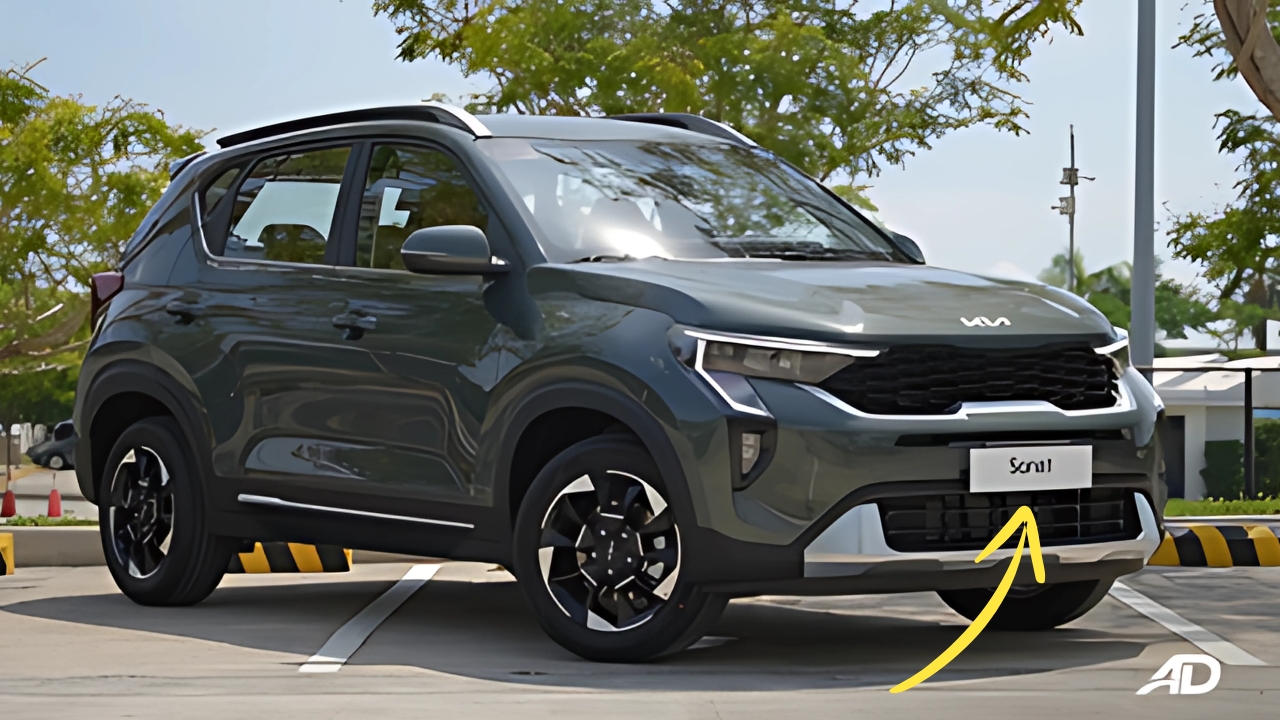Kia Sonet: The Kia Sonet represents a thoughtful approach to the highly competitive sub-four-meter SUV segment in the Indian automotive market, demonstrating how global engineering expertise can be effectively adapted to specific regional requirements.
Since its introduction in 2020 and through subsequent updates, the Sonet has established itself as a compelling proposition by balancing sophisticated design, comprehensive feature integration, and powertrain diversity to address diverse consumer preferences within a strictly defined regulatory framework.
Kia Sonet: Design Philosophy and Exterior Aesthetics
The Sonet’s exterior design establishes a distinctive visual identity through Kia’s “Tiger Nose” design language, adapted specifically for compact dimensions.
The front fascia features a wide grille with three-dimensional geometric patterns flanked by distinctive LED headlamps with heartbeat-inspired daytime running light signatures.
This lighting arrangement creates immediate brand recognition while providing superior illumination compared to halogen alternatives common in this segment.
The profile maintains SUV proportions despite the length constraints, with a floating roof design, prominent character lines, and muscular wheel arches housing alloy wheels (16-inch on higher variants) that enhance the vehicle’s stance.
The relatively high ground clearance of 211mm addresses practical requirements for navigating uneven urban infrastructure and occasional unpaved roads.
Available in multiple single-tone and dual-tone color options, the exterior finish provides meaningful personalization opportunities.
Dimension-wise, the vehicle measures 3,995mm in length, 1,790mm in width, and 1,642mm in height, with a wheelbase of 2,500mm. These proportions maximize interior space while carefully maintaining sub-four-meter classification for favorable taxation.
Design elements like roof rails, silver skid plates, and wraparound LED tail lamps further enhance the premium aesthetic while providing visual continuity with larger Kia SUVs—creating family resemblance across diverse price segments.
Interior Design and Technology
The cabin design prioritizes perceived spaciousness and material quality, with a driver-centric layout that emphasizes ergonomic accessibility.
The horizontal dashboard arrangement incorporates a floating-style 10.25-inch touchscreen infotainment display that serves as the technological focal point.
Physical controls for critical functions complement touch inputs, ensuring operational simplicity across varied user demographics.
The seating arrangement accommodates five occupants with reasonable comfort despite compact external dimensions.
The front seats provide adequate support with ventilation functionality on higher variants—a particularly valuable feature given India’s climate conditions.
The rear bench offers acceptable legroom considering the vehicle’s footprint, with a near-flat floor enhancing middle passenger comfort.
Storage solutions demonstrate practical consideration, with a 392-liter boot capacity representing competitive volume for this segment.
Multiple cabin storage compartments, including a cooled glovebox, front console storage, and adequately sized door pockets, address everyday carrying requirements for urban users.
Material selection balances visual appeal with durability, utilizing textured soft-touch materials for primary surfaces with leatherette upholstery on appropriate trim levels.
Ambient lighting with multiple color options creates distinctive atmosphere during nighttime driving.
Technology Integration
The technology package centers around the aforementioned 10.25-inch touchscreen infotainment system featuring wireless Apple CarPlay and Android Auto connectivity.
The interface design prioritizes legibility and straightforward operation with customizable widget-based layouts. The premium 7-speaker Bose audio system delivers impressive sound quality uncommon in this segment.
The semi-digital instrument cluster combines analog tachometer with a 4.2-inch digital information display, providing essential information without overwhelming complexity.
The climate control system features touch-sensitive controls integrated into the dashboard design, enhancing aesthetic continuity.
Connected car technology through Kia’s UVO Connect system offers over 60 features including remote engine start/stop, climate control operation, vehicle tracking, and geofencing capabilities.
Voice recognition functionality provides hands-free operation of essential features, though with variable accuracy depending on ambient noise conditions.
Safety technology represents a particular emphasis, with six airbags, electronic stability control, hill start assist, and vehicle stability management available on higher variants—features typically associated with more expensive offerings.
The inclusion of front parking sensors and a 360-degree camera system aids maneuvering in congested urban environments characteristic of Indian cities.
Powertrain Options and Performance
The Sonet offers remarkable powertrain diversity for its segment, with three engine options reflecting different consumer priorities.
The 1.2-liter naturally aspirated four-cylinder petrol engine produces 83 horsepower and 115 Nm of torque, delivering adequate performance for urban environments without prioritizing outright acceleration.
This powerplant emphasizes refinement and efficiency, with reasonable NVH characteristics for its category.
The 1.0-liter turbocharged three-cylinder GDI petrol engine generates 120 horsepower and 172 Nm of torque, providing significantly enhanced performance while maintaining reasonable efficiency.
The low-end torque delivery particularly benefits urban driving scenarios with frequent acceleration from low speeds.
The 1.5-liter turbocharged diesel engine produces 100 horsepower and 240 Nm of torque, delivering strong mid-range performance valuable for highway cruising and fully-loaded driving conditions.
This powerplant delivers impressive efficiency while maintaining reasonable NVH characteristics for a diesel unit in this segment.
Transmission options include a 5-speed manual, 6-speed manual, 6-speed torque converter automatic, and 7-speed dual-clutch transmission, providing choices across different driving preferences and budget considerations.
The inclusion of paddle shifters on automatic variants enhances driver engagement, while drive modes (Normal, Eco, Sport) and traction modes (Snow, Mud, Sand) modify engine mapping, transmission behavior, and traction control parameters according to conditions.
Kia Sonet:
The Kia Sonet represents a significant achievement in balancing global design standards with specific regional adaptations.
By offering premium features typically associated with larger vehicles while maintaining compact dimensions appropriate for urban environments, Kia has created a compelling proposition that addresses the increasingly sophisticated demands of consumers in the competitive Indian market.
The comprehensive feature set, diverse powertrain options, and distinctive design elements establish meaningful differentiation in a segment where practical functionality often overshadows character and identity.
For urban consumers seeking SUV attributes within constrained budgets and parking spaces, the Sonet delivers a balanced compromise that acknowledges practical limitations while providing genuine aspiration value.
As the automotive landscape continues evolving toward electrification and enhanced connectivity, the Sonet’s architecture provides reasonable adaptability for future technological integration, suggesting continued relevance through subsequent iterations and regulatory developments.

